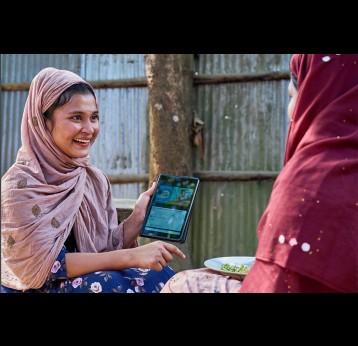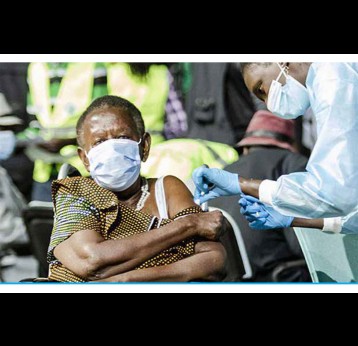Document library
The latest documents related to Gavi's work. Browse through the selection of categories below, or click on 'View all' to see more.
The latest documents related to Gavi's work. Browse through the selection of categories below, or click on 'View all' to see more.
Board minutes and presentations
All Board minutes
10 African Vaccine Manufacturing Accelerator AVMA PPT pdf
AFRICAN VACCINE MANUFACTURING
ACCELERATOR (AVMA)
BOARD MEETING
Marie-Ange Saraka Yao
3 -4 December 2025, Geneva, Switzerland
2 2
Objective A
A sustainable, African vaccine
manufacturing base that is
contributory to healthy global
vaccine markets
Objective B
Improved African pandemic
and outbreak vaccine
supply resilience
>0.7 bn
of capacity in a pandemic
3 or more
technologies
>0.8 bn
Doses supported
At least 4
Vaccine manufacturers
With a set of cautious, evidence -
based, and reasonable key targets: Two main objectives: Two distinct payment systems to support vaccine
manufacturers on the African continent:
Payment for an
AV M A
priority vaccine or on a
priority platform with WHO
PQ
Payments from US$ 10
million up toUS$ 25 million
Milestone Payment
Accelerator
Payment
To p -up payment per
dose following award in
UNICEF tender
Between US$ 0.30 and
US $ 0.50 per dose
US$ 250 M
in total for Milestone
Payments
US$ 750 M
in total for
Accelerator
Payments
AVMA is a pre-funded 10 -year financial instrument with two
objectives – backed by ~US$ 1,176 million of donor pledges
Board Meeting, 3- 4 December 2025
11 Ethics Risk and Compliance Office update PPT pdf
ETHICS, RISK AND
COMPLIANCE OFFICE
UPDATE
BOARD MEETING
Maria Thestrup
3-4 December 2025, Geneva, Switzerland
2025 Annual
Risk and
Assurance
Report
12 Fiduciary Risk Assurance and Financial Management Capacity Building PPT pdf
FIDUCIARY RISK ASSURANCE AND FINANCIAL
MANAGEMENT CAPACITY BUILDING
BOARD MEETING
François Note
Edmund Grove
3-4 December 2025, Geneva, Switzerland
Baseline at endof Gavi 4.0 Target end of
Gavi 5.0 Baseline at endof Gavi 4.0 At end of
Gavi 5.0
Government is now our primary recipient due to FM&RA 5.0
28
(41% )
US$ 0.5 billion(29%)
40
(59% )
Through partners
Hybrid & Government
19
( 33% )
US$ 1.3 billion
(71%)
58
Number of countries, by funding channel
During Gavi 5.0, FM&RA helped to establish assurance mechanisms across 43 countries (up from ~12 baseline).
13 countries progressed to partially/ fully using country systems by Q2 2025 and 2 backslid. It is anticipated that 1 more c
ountry will progress by the start of Gavi 6.0.
Excluding: COVAX Delivery Support and MICS grants. Data source: Q2 2025 UCS UpdateUS$
1.0
billion (
46 %)
Disbursements to country systems by fund amount
39
(67%)
68
US$ 1.3 billion(54%)
US$ 2.3 billion
US$ 1.8 billion
2 Board Meeting, 3-
4 December 2025
Evaluations
All Evaluations
This document aims to address: 1. Introduce real-time monitoring approaches and how RTM can strengthen vaccination campaigns and routine immunization programmes; 2. Provide guidance to decision-makers and planners on the key considerations enabling implementation of real time approaches and digital solutions in order to strengthen vaccination campaigns and routine immunization programmes, thereby enhancing immunization service delivery; 3. Elaborate on implementation aspects related to realtime monitoring technologies.
This country technical brief presents three use cases of Real-Time Monitoring (RTM) approaches used in Rwanda for 1) COVID-19 surveillance 2) Vaccination Delivery and Monitoring and 3) COVID-19 case management. Good practices and lessons learned by Rwanda are also highlighted in the brief.


